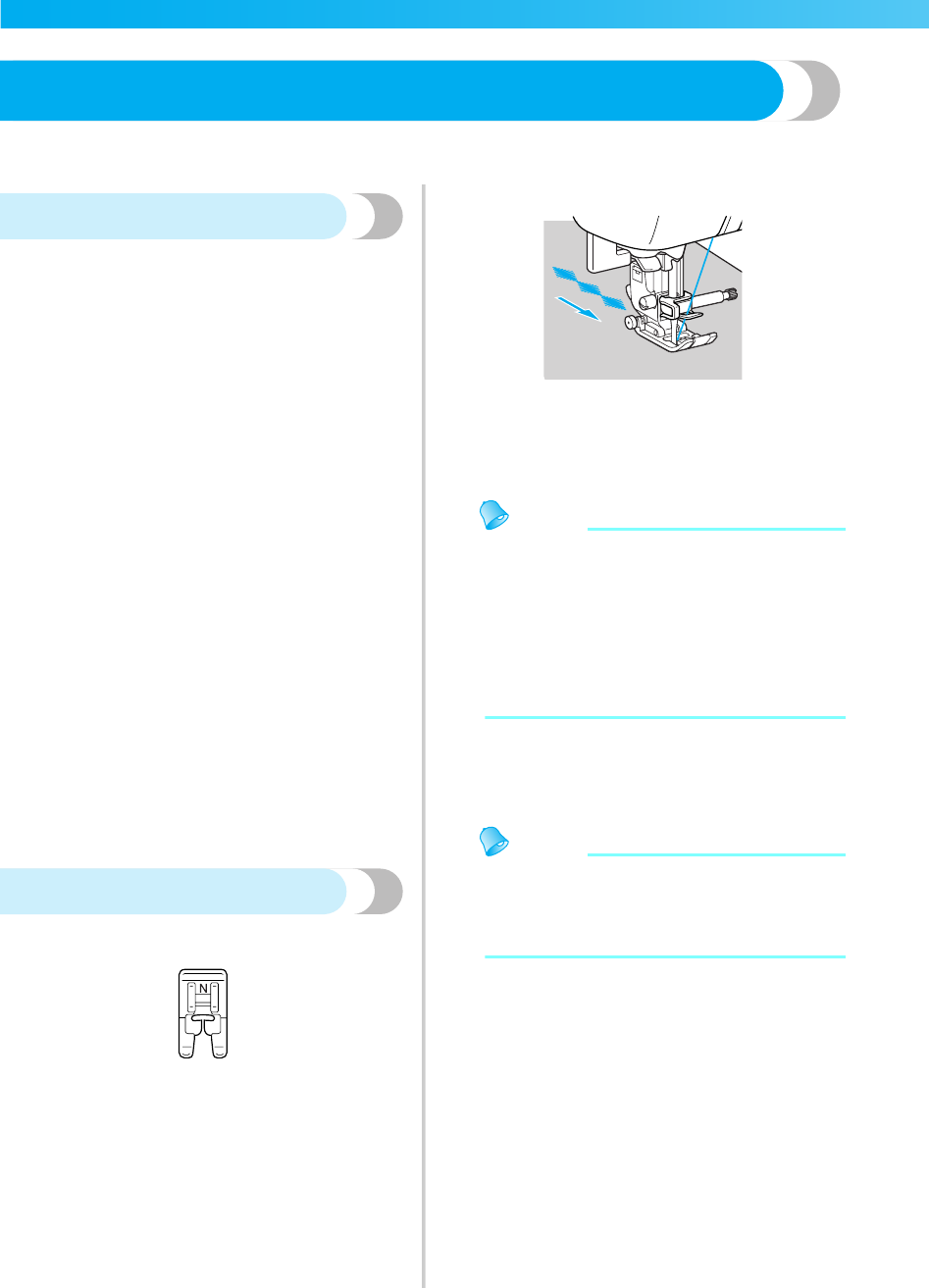
122
UTILITY STITCHES — — — — — — — — — — — — — — — — — — — — — — — — — — — — — — — — — — — — — — — — — — —
Sewing the Various Built-in Decorative Patterns
Besides utility stitches, you can sew decorative stitches, satin stitches and cross stitches. All are sewn with
monogramming foot "N".
Sewing beautiful patterns
In order to sew the patterns correctly, the following
must be considered.
■ Fabric
Before sewing stretch or thin fabrics or fabrics
with a coarse weave, affix stabilizer material to
the wrong side of the fabric or place a thin sheet
of paper, such as tracing paper, under the fabric.
Since material puckering or bunched stitches may
occur when satin stitches are sewn, be sure to
affix stabilizer material to the fabric.
■ Needles and threads
When sewing thin, mediumweight or stretch
fabrics, use the ball point needle. When sewing
thick fabrics, use a 90/14 home sewing machine
needle. In addition, #50 to #60 thread should be
used.
■ Trial sewing
Depending on the type and thickness of the fabric
being sewn and whether or not stabilizer material
is used, the desired result may not be achieved.
Be sure to sew a trial piece of fabric before
sewing your project. In addition, while sewing, be
sure to guide the fabric with your hands in order
to prevent the fabric from slipping.
Sewing patterns
a
Attach monogramming foot "N".
• For details, refer to "Replacing the presser
foot" (page 43).
b
Select a stitch.
• For details, refer to steps
a through g of
"Selecting stitching" (page 51).
c
Start sewing.
X The stitching is sewn in the direction
indicated by the arrow.
d
Sew reinforcement stitches.
Memo
z When sewing a pattern, it is useful to first set
the automatic reverse/reinforcement
stitching setting. For details, refer to
"Automatic sewing reverse/reinforcement
stitches" (page 64).
z When sewing alphanumeric characters, the
machine automatically sews reinforcement
stitches for each character.
e
When you are finished sewing, use scissors to
trim off any excess threads at the beginning of
the stitching and between the patterns.
Memo
z For details on adjusting the stitch width and
length, refer to "Adjusting the stitch width"
(page 61) and "Adjusting the stitch length"
(page 62).


















